
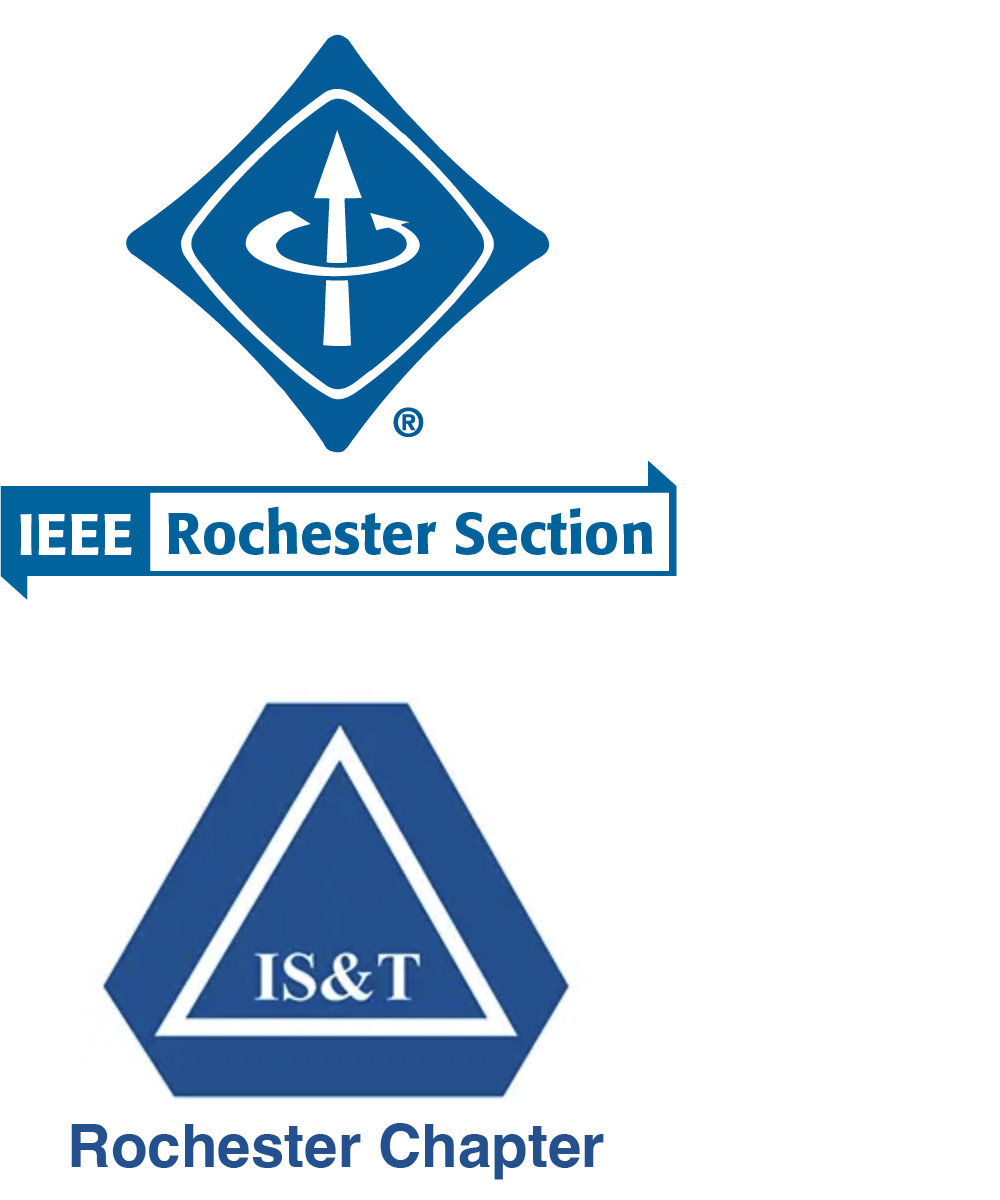 Center for Emerging & Innovative Sciences, University of Rochester
Center for Emerging & Innovative Sciences, University of Rochester| 16-October-2023 | Paper and abstract-only submission closes (Extended deadline) |
| 20-October-2023 | Notification of Acceptance |
| 25-October-2023 | Submission of camera-ready paper, poster & virtual poster files |
| 3-November-2023 | Workshop |
| $50 | In-person attendance, Non-IEEE member |
|---|---|
| $40 | In-person attendance, IEEE member, |
| $15 | Virtual-only attendance, Non-IEEE member |
| $10 | Virtual-only attendance, IEEE member |
| $0 | All Students (with ID) |
Morning session: Submitted presentations, along with invited talks on Neuroscience advances in analysis, image & signal processing, statistical, and experimental design techniques to uncover neural functions of the human brain and development of techniques for identifying anomalous neural behavioral patterns (neuromarkers) based on the acquisition and analysis of inherently noisy multi-dimensional signals.
| 8:00 | Check-in | ||
| Coffee, | Tea & Bagels | ||
| 8:10 | Introduction | ||
| 8:15 | Sponsor Presentation; | John Crannel-Ash | Maximizing Bandwidth with Multi-channel/Chip Synchronization in ADRV9002-based Software Defined Radios |
| 8:30 | Keynote | Dr. John J. Foxe | Innovations in Neurophysiology and Approaches for the Development of Objective Inter-species Disease Neuromarkers |
| 9:15 | Invited paper | Dr. Emily Knight | Uncovering Neural Signatures of Sensory Processing in Autism |
| 9:45 | Coffee break | ||
| 10:00 | Submitted paper | Dr. Ajay Anand | Deep Learning based in situ ultrasound thermometry for thermal ablation monitoring |
| 10:15 | Submitted paper | Nusrat Jahan | Federated Learning-assisted Self-supervised CNN for Monkeypox Diagnosis |
| 10:30 | Submitted paper | Briana Santo | ARTSA, a New Desktop Application for Automated Renal Tubular Segmentation and Analysis |
| 10:45 | Submitted paper | Siladitya Khan | Quantifying Strain Dependence of Multi-Frequency Shearwave Elastography |
| 11:00 | Invited paper | Dr. Ross Maddox | Investigating attention across the auditory system using forward modeling of brain activity |
| 11:30 | Invited paper | Dr. Samuel Norman-Haignere | Inferring the computations and organization of human auditory cortex |
| Noon | Lunch | ||
| Noon | Poster Session: | Luke Kurlandski | From Bytes to Insights: A New Era of Malware Detection |
| Nate Matthews | Powerful and Efficient Stepping-stone Detection with DeepCoFFEA | ||
| Xin-Miao Lin | Catch Missing Details: Image Reconstruction with Frequency Augmented Variational Encoder | ||
| Dr. Reynold Bailey | News Consumption Helps Readers Identify Model-Generated News | ||
| Dr. Tre DiPassio | Interacting with Smart Audio Devices using Vibration | ||
| Jenna Rutowski | Estimating Direction of Arrival in Reverberant Environments using Panel Microphones | ||
| Chris Humphry | Secure Vascular Biometric Recognition | ||
| Bryce Gernon | Deepfake Bias: Analysis and Balanced Dataset Generation | ||
| Henry Zelenak | Choosing the Best Image Classification Model: A Comparative Analysis of Model Architectures for Low-Context Learning | ||
| Yijing Kelly Wu | Detecting Deepfakes: A Comparative Study of Synthetic, Altered and Spliced Faces | ||
| Caitlin Dreisbach | Using Simulated Data to Predict Birthweight from Pre-natal Ultrasound Images | ||
| Dr. Carlos Max-Perera | ML-based RF Fingerprinting for LoRaWAN Device Identification | ||
| Sergei Chuprov | Are Industrial ML Image Classifiers Robust to Withstand Adversarial Attacks on Video | ||
| Roman Zatsarenko | Are Industrial ML Image Classifiers Robust to Data by Network QoS Degradation | ||
| Ninad Kale | Active Multi-Modal Approach for Enhanced User Recognition in Social Robots | ||
| Arnab Ghosh | ShiVaNet: Shift Variant Image Deconvolution using Deep Learning | ||
| Sougato Bagchi | Image Enhancement for Unconstrained Environments | ||
| Debamitra Chakraborty | Terahertz Time Domain Spectroscopy for Probing DC Conductivity of Single-layer Graphene | ||
| Shaik Akib Shahriyar | Enhanding Adversarial Robustness of Deepfake Detectors with Stable Diffusion Data Augmentation |
Afternoon session: Submitted presentations, along with an invited talk involving photonics, imaging and real-time computational processes, then invited talks on the capabilities, limitations, ethical risks, accountability, and guardrails of Large Language Models and Generative AI from four perspectives, followed by a panel discussion and debate on how these technologies may be optimized to augment, rather than detract from, the human experience.
| 13:30 | Invited paper | Dr. Michael Giacomelli | Real-time assembly of gigavoxel mosaics using two-photon microscopy during surgery |
| 13:45 | Submitted paper | Ilyes Benslimane | Single-Subject Self-Calibrating Network (BIOPHYSICSS-DL) with an improved prediction model for X-separation with histological validation |
| 14:00 | Submitted paper | Debamitra Chakraborty | Monitoring the Effectiveness of Pancreatic Ductal Adenocarcinoma Treatment Therapies with Terahertz Spectroscopy |
| 14:15 | Submitted paper | Md Yusuf Harun | Prioritized Training on Rehearsal Samples for Efficient Online Continual Learning |
| 14:30 | Submitted paper | Dr. Akshay Agarwal | Attention-guided Multi-attribute Architecture for Deepfake Detection |
| 14:45 | Submitted paper | Dr. Dima Dera | Robust Bayesian Vision Transformer for Image Analysis and Classification |
| 15:00 | Coffee break | ||
| 15:10 | Awards | ||
| 15:15 | Invited paper | Jie An | Generating interleaved image-text, a new task in Generative AI |
| 15:30 | Invited paper | Dr. Christopher Kanan | The Current Capabilities and Limitations of Generative AI |
| 15:45 | Invited paper | Dr. Jonathan Herington | High-Level Ethical Risks for Generative AI |
| 16:00 | Invited paper | Dr. Andrew D. White | Language is the Future of Chemistry |
| 16:15 | Invited paper | Dr. Kathleen Fear | Accountability and Generative AI in Healthcare |
| 16:30 | Panel Discussion and Debate |
Dr. Kanan, Dr. Herington, Dr. White, and Dr. Fear |
Large Language Models & Generative AI: Capabilities, Liabilities and Guardrails |
| 17:30 | Workshop ends |

 Center for Emerging & Innovative Sciences, University of Rochester
Center for Emerging & Innovative Sciences, University of Rochester
Rochester Chapter of the IEEE Signal Processing Society
Rochester Chapter of the IEEE Computer Society
Rochester Chapter of the IEEE Photonics Society
Rochester Chapter of the Society for Imaging Science and Technology
 Dr. John J. Foxe
Dr. John J. Foxe
University of Rochester
Research Director - The Ernest J. Del Monte Institute for Neuroscience
Chair - Department of Neuroscience
Kilian J. and Caroline F. Schmitt Chair in Neuroscience
Professor - Department of Neuroscience, Dept. of Psychiatry, and Center for Visual Science
Topic:
Innovations in Neurophysiology and Approaches for the Development of Objective Inter-Species Disease Neuromarkers
Abstract: Developing objective neuromarkers (endophenotypes) of disease in humans presents a unique challenge for researchers and clinicians in that, unlike most other organs in the body, we cannot readily take a biopsy of tissue or easily sample the fluids that bathe the brain. So, for example, it is only post-mortem that a definitive diagnosis of Alzheimer’s disease can be made when brain tissue can be examined for the telltale neurofibrillary tangles and amyloid-beta plaques. Nonetheless, developments in neuroimaging and neurophysiological approaches are allowing neuroscientists unprecedented ability to observe both functional and structural outcomes non-invasively, and much progress has been made in the development of objective measures for many diseases of the brain, both neurodevelopmental diseases and psychiatric conditions. In parallel, genetic engineering advances have allowed for the development of animal models of many of these human diseases, providing exquisite ability to measures disease processes in neural tissue. As extraordinary as this latter development has been, a second major challenge arises, and that is how to bridge the gap between the measures we can reasonably make non-invasively in human patients, with the detailed outcomes we are capable of in mouse models. In this presentation, I will describe some of the new technologies we have available in both the human and animal neurophysiological toolbox, and I will describe new approaches to bridging the inter-species “translational gap” through combined electrophysiological approaches.
 Dr. Emily Knight, M.D., Ph.D.
Dr. Emily Knight, M.D., Ph.D.
University of Rochester
Assistant Professor - Department of Developmental & Behavioral Pediatrics, and Dept. of Neuroscience
Topic:
Uncovering Neural Signatures of Sensory Processing in Autism
Abstract: Biological motion imparts rich information related to the movement, actions, intentions and affective state of others, which can provide foundational support for various aspects of social cognition and behavior. Given that atypical social communication and cognition are hallmark symptoms of autism spectrum disorder (ASD), many have theorized that a potential source of this deficit may lie in dysfunctional neural mechanisms of biological motion processing. Synthesis of existing literature provides some support for biological motion processing deficits in autism spectrum disorder, although high study heterogeneity and inconsistent findings complicate interpretation. Here, we attempted to reconcile some of this residual controversy through the use of signal processing analysis. This methodology allowed us to undercover a previously unrecognized modulating role for attention in biological motion processing in ASD. We employed high-density electroencephalographic (EEG) recordings while participants observed point-light displays of upright, inverted and scrambled biological motion under two task conditions to explore spatiotemporal dynamics of intentional and unintentional biological motion processing in children and adolescents with ASD (n=27), comparing them to a control cohort of neurotypical (NT) participants (n=35). Behaviorally, ASD participants were able to discriminate biological motion with similar accuracy to NT controls. However, electrophysiologic investigation revealed reduced automatic selective processing of upright biologic vs. scrambled motion stimuli in ASD relative to NT individuals, which was ameliorated when task demands required explicit attention to biological motion. Together, these data suggest that individuals with ASD are able to discriminate, with explicit attention, biological from non-biological motion but demonstrate diminished automatic neural specificity for biological motion processing. This may have cascading implications for the development of higher order social cognition. The results highlight the superior sensitivity of neurophysiologic measurement over behavioral measures in identification of differential neural network recruitment in clinical populations.
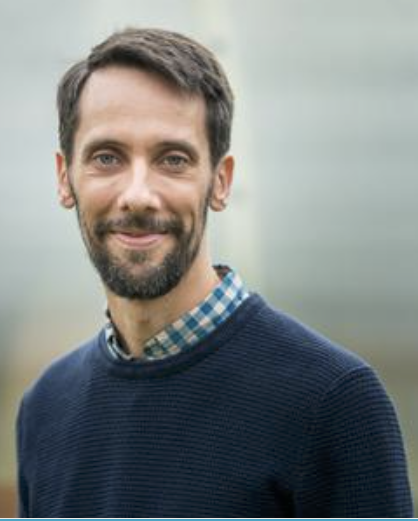 Dr. Ross Maddox
Dr. Ross Maddox
University of Rochester
Associate Professor - Department of Biomedical Engineering, and Dept. of Neuroscience
Topic:
Investigating attention across the auditory system using forward modeling of brain activity
Abstract: Selective auditory attention—the ability to focus on one sound source in the presence of many others—is an essential part of humans’ ability to communicate verbally. Many studies have demonstrated a strong effect of attention on the way speech is encoded by the auditory cortex. The results of similar studies investigating attention in the auditory brainstem, which receives signals from the inner ear, extracts features such as pitch and location, and passes them on to the cortex, have been much more mixed. Part of what has made these studies difficult is that traditional methods for measuring brainstem responses involve thousands of repetitions of short, artificial sounds, which makes engaging attentional mechanisms difficult. Our lab has developed new methods for using natural, unrepeated speech to measure brainstem activity and investigate attention while listeners perform the ecologically relevant task of listening to one audiobook while ignoring another. Using these methods, along with custom electrodes which can be placed on the eardrum, we tested the effects of selective attention on the responses of distinct areas of the auditory system, from its initial encoding by the auditory nerve through the brainstem and cortex. We find a strong effect of attention in the cortex, replicating previous studies, but find no evidence of attentional effects in earlier areas of the brain.
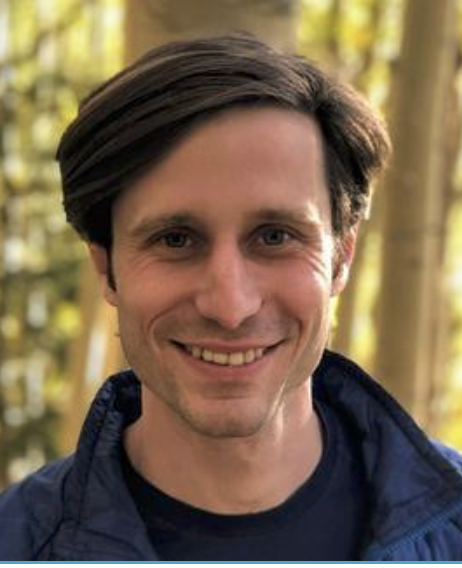 Dr. Samuel Norman-Haignere
Dr. Samuel Norman-Haignere
University of Rochester
Assistant Professor - Department of Biostatistics nd Computational Biology, Dept. of Neuroscience, and Dept. of Biomedical Engineering
Topic:
Inferring the computations and organization of human auditory cortex
Abstract: To understand the meaning of a sentence, recognize a familiar voice in a crowd, or pick out the melody in a song, the brain must rapidly recognize, remember, and synthesize information across timescales spanning milliseconds to seconds. Human auditory cortex is essential to this process, but many basic questions about its organization and computational properties have remain unanswered, in part due to the inherent challenge of probing responses to high-dimensional natural stimuli using coarse and noisy neuroimaging methods. In this talk, I will describe two methodological advances that make it possible to: (1) infer brain organization from responses to high-dimensional natural stimuli (2) test whether a computational model can explain a neural response by comparing natural and “model-matched” stimuli. By applying these methods to neuroimaging data and human intracranial recordings, we have uncovered some of the dominant response dimensions that organize human auditory cortex and inferred computational principles that underlie their response.
 Dr. Michael Giacomelli
Dr. Michael Giacomelli
University of Rochester
Assistant Professor - Department of Biomedical Engineering, and Institute of Optics
Topic:
Real-time assembly of gigavoxel mosaics using two-photon microscopy during surgery
Abstract: Two photon microscopy can image and diagnose cancer in fresh tissue, but is challenging to perform fast enough to provide real-time diagnosis during surgical procedures or biopsies where billions of voxels must be imaged in order to evaluate a specimen. In this talk, I present an overview of the hardware and software solutions we developed to rapidly image very large (centimeter scale) tissues at sub-wavelength resolution and then assemble those images into a virtual histology that can be used to diagnose a patient or guide surgery in real-time.
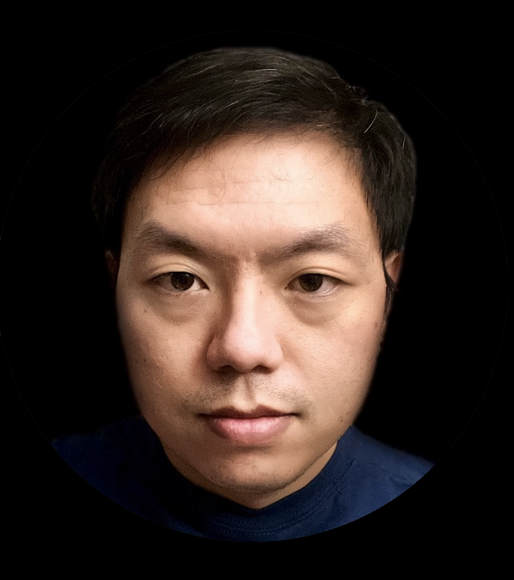 Jie An
Jie An
University of Rochester
Department of Computer Science (Dr. Jiebo Liu, advisor)
Topic:
Generating Interleaved Image-text; a New Task in Generative AI
Abstract: This work investigates a challenging task named open-domain interleaved image-text generation, which generates interleaved texts and images following an input query. We propose a new interleaved generation framework based on prompting large-language models (LLMs) and pre-trained text-to-image (T2I) models, namely OpenLEAF. In OpenLEAF, the LLM generates textual descriptions, coordinates T2I models, creates visual prompts for generating images, and incorporates global contexts into the T2I models. This global context improves the entity and style consistencies of images in the interleaved generation. For model assessment, we first propose to use large multi-modal models (LMMs) to evaluate the entity and style consistencies of open-domain interleaved image-text sequences. According to the LMM evaluation on our constructed evaluation set, the proposed interleaved generation framework can generate high-quality image-text content for various domains and applications, such as how-to question answering, storytelling, graphical story rewriting, and webpage/poster generation tasks. Moreover, we validate the effectiveness of the proposed LMM evaluation technique with human assessment. We hope our proposed framework, benchmark, and LMM evaluation could help establish the intriguing interleaved image-text generation task.
 Dr. Christopher Kanan
Dr. Christopher Kanan
University of Rochester
Associate Professor - Department of Computer Science
Topic:
The Current Capabilities and Limitations of Foundation Models and Generative AI
Abstract: Generative AI systems are now being used across all sectors of the economy. They have enabled fundamental advances in editing and drafting documents, programming, creating art, chat bots, automation, and much more. They have democratized skills that previously required years of training, and can greatly enhance the productivity of individuals and organizations. These systems have been dubbed “Foundation Models” because they are extremely large AI systems that can be used for many tasks, where these systems learn through self-supervised learning objectives. In this talk, I describe how some of the most influential systems work. I describe their current capabilities and limitations, and discuss some of the missing ingredients needed to further advance them.
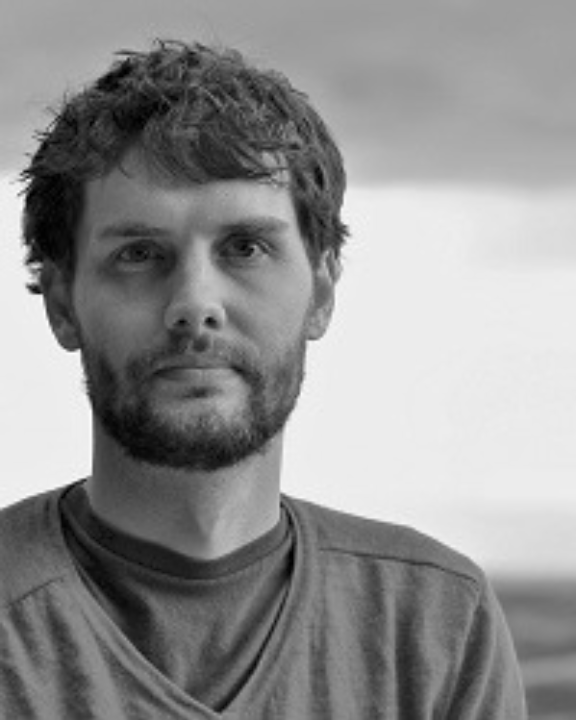 Dr. Jonathan Herington
Dr. Jonathan Herington
University of Rochester
Assistant Professor - Department of Philosophy
Topic:
High-Level Ethical Risks for Generative AI
Abstract: The rapid advancement of generative AI poses exciting possibilities but also raises critical ethical challenges around what it means to be a human being . There has been much focus on familiar ethical risks: (1) many models train on massive datasets scraped without consent, potentially undermining individual privacy and profiting off of public datasets, (2) training data reflects societal prejudices which can propagate unfair outputs that marginalize vulnerable groups, and (3) as systems become more autonomous, unpredictable behaviors beyond developer intentions could emerge. These risks are real and immediate, but generative models also raise more existential ethical questions: what does it mean to “create” something in the context of generative AI? Should we worry about the atrophy of creative and analytic skills in the face of tools that can do those tasks for most of us? What is it that humans are distinctively good at in a world with advanced generative models? In this talk, I explore a simple philosophical framework for thinking about these risks that focuses on (i) promoting human welfare, (ii) respecting human autonomy, and (iii) justly distributing the benefits and burdens of these systems.
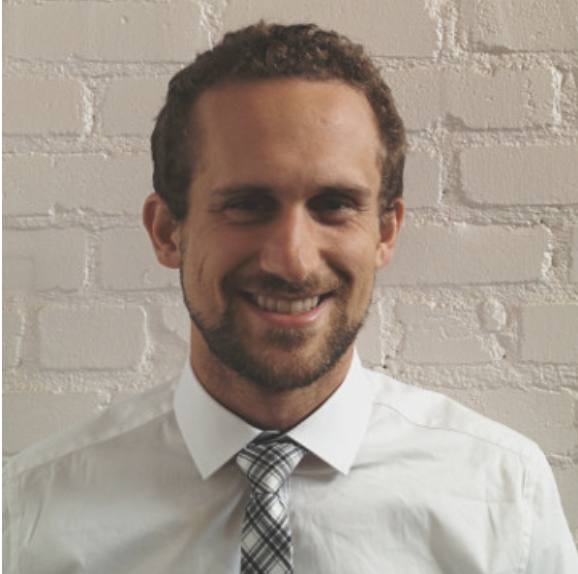 Dr. Andrew D. White
Dr. Andrew D. White
University of Rochester
Associate Professor - Department of Chemical Engineering
Topic:
Language is the future of Chemistry
Abstract: Large language models (LLMs) are beginning a new era of chemistry, where LLMs can connect and reason about experiments, tools, and databases to accomplish open-ended tasks in chemistry. This is creating both new opportunities in accelerating chemistry, but also increasing the challenge of interpretation of model outputs. I will summarize our recent work on applying LLMs to authentic chemical challenges, their ability to use tools, access scientific literature, and how we can force them to explain themselves.
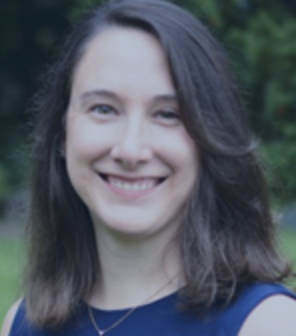 Dr. Kathleen Fear
Dr. Kathleen Fear
University of Rochester
Director of Data & Analytics, UR Health Lab
Assistant Professor - School of Nursing
Topic:
Accountability and Generative AI in Healthcare
Abstract: This presentation will explore the transformative potential of large language models (LLMs) and generative AI tools in addressing problems within the healthcare sector. The focus will be on leveraging these advanced technologies to streamline time-consuming procedures, reduce administrative burden, and enhance patient care. This talk will delve into how to effectively identify the appropriate problem spaces for the application of generative AI, with an emphasis on minimizing risks and ensuring the utmost safety and privacy for patients. Furthermore, we will touch on the ethical, regulatory, and accountability issues that come with the implementation of AI in healthcare.